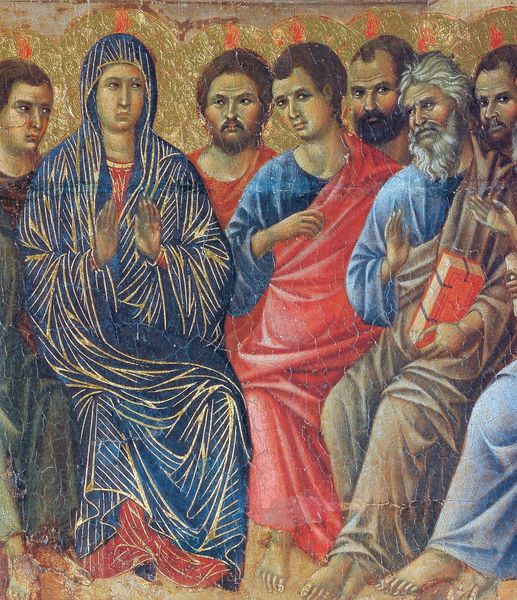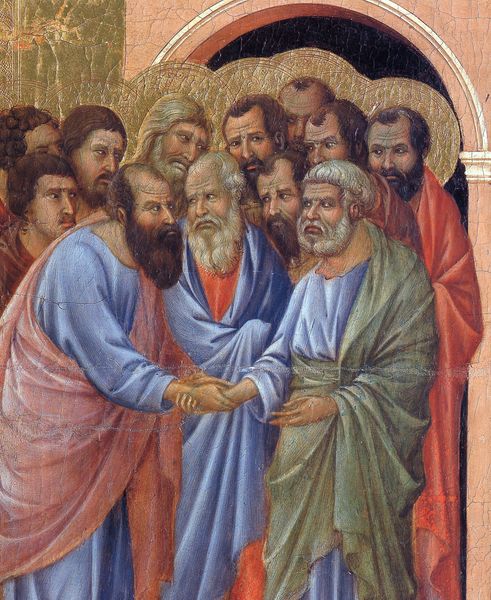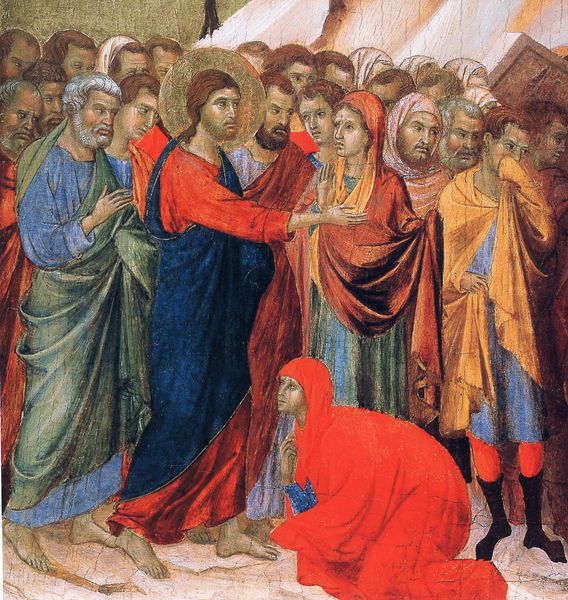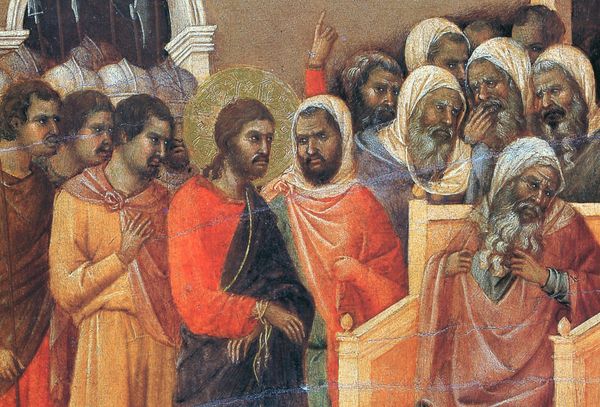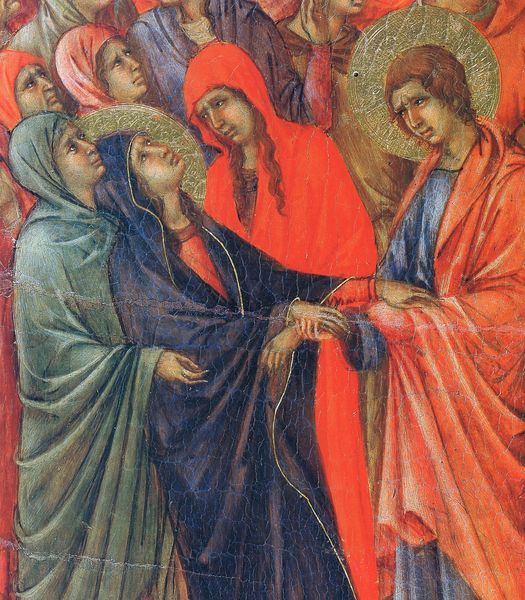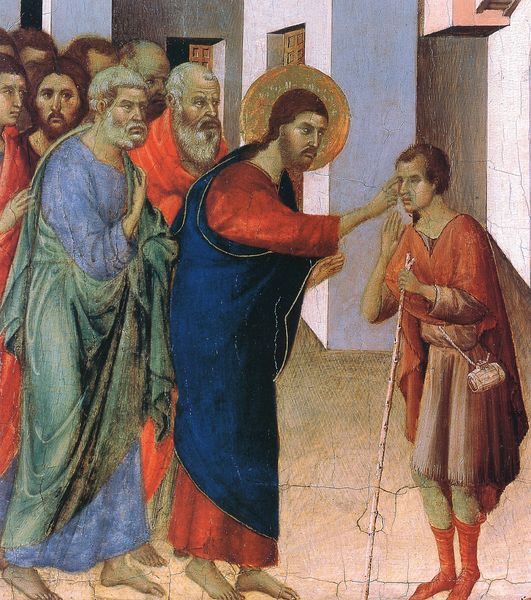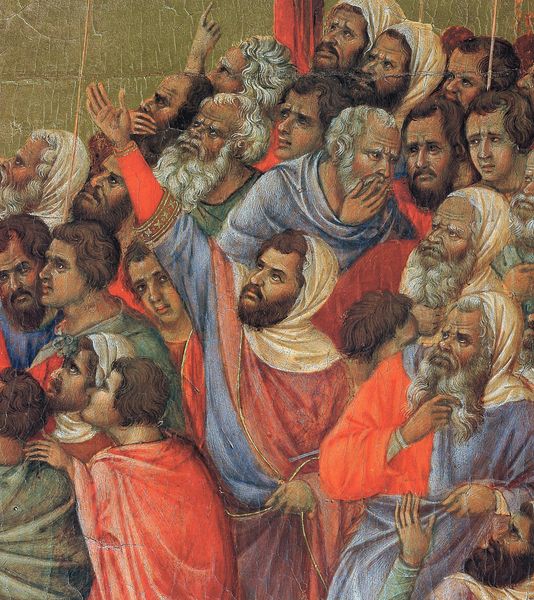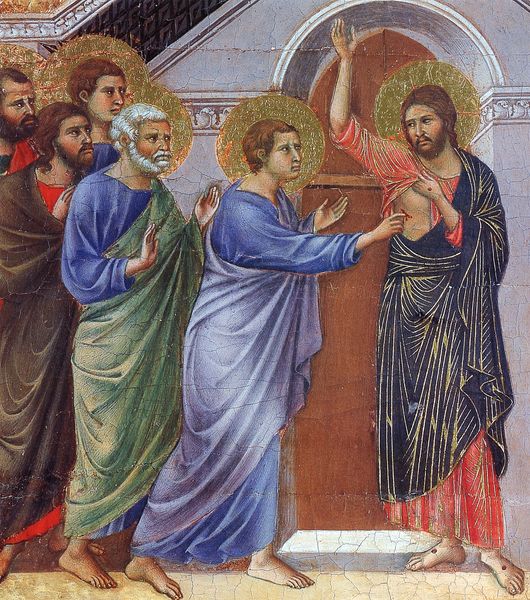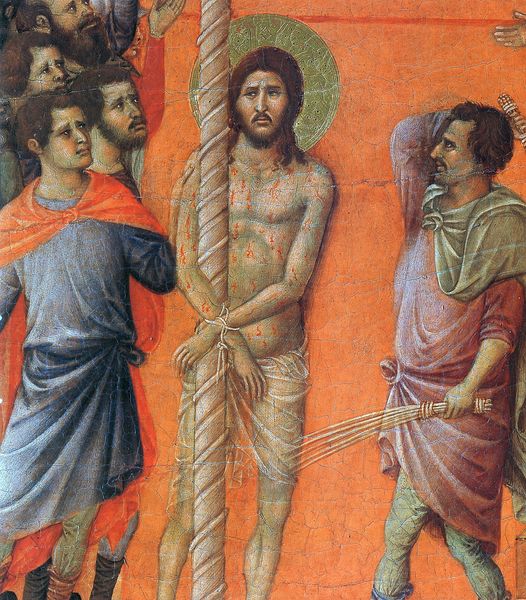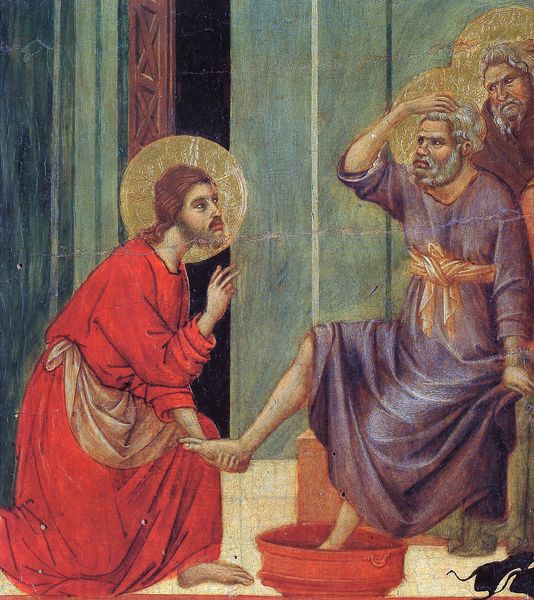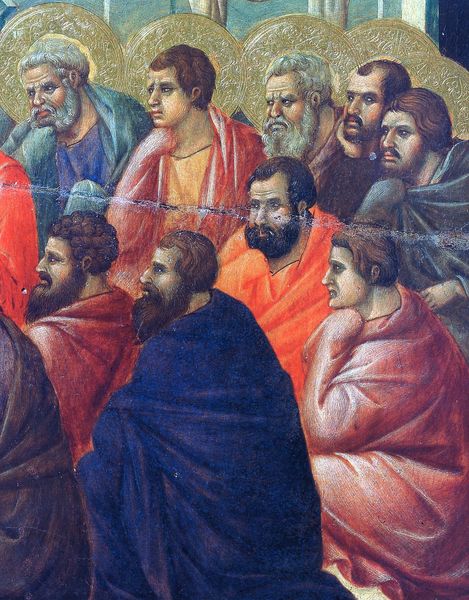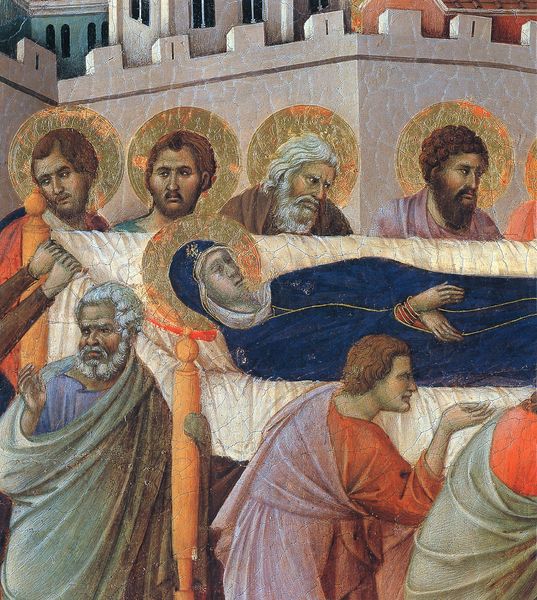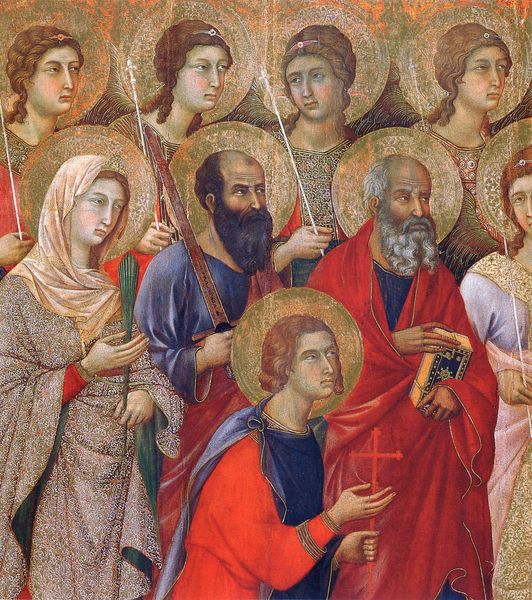
tempera, painting, fresco
#
portrait
#
medieval
#
narrative-art
#
tempera
#
painting
#
sienese-school
#
figuration
#
fresco
#
oil painting
#
soldier
#
chiaroscuro
#
christianity
#
history-painting
#
international-gothic
#
italian-renaissance
#
christ
Copyright: Public domain
Curator: Here we have a fragment from Duccio's "Arrest of Christ," dating back to 1311. What are your first impressions? Editor: A somber anticipation, definitely. The soldiers behind Christ are practically faceless—uniform helmets and spears create this threatening wall of metal. You can almost smell the damp earth under their feet. Curator: It’s tempera on panel, incredibly vibrant still, after all these centuries. Consider how Duccio employs a kind of stylized flatness, a hallmark of Sienese painting, while managing to imbue real emotional weight, especially in Christ's downcast expression. The materiality of the pigment must have been stunning initially. Editor: Absolutely. And the way the gold leaf halo practically sears through the composition emphasizes the tragedy unfolding. This wasn’t some detached, gilded ideal. Medieval painting, often reduced to manuscript illumination, gets such short shrift, right? I feel like in viewing art history you can almost forget the work done by people; like we didn't labor on them using material techniques. Curator: That gilded ideal was supported by an industry, of course! There's a quiet revolution simmering within even these established religious narratives. He is making tangible emotion. A friend once remarked that Christ's robe is more compelling than a photograph, so the material becomes… a filter of emotions. Editor: Filter is a great term! So, Duccio uses familiar iconography – Christ, the halo, the soldiers – but filters it through such a close focus. It forces a connection; those slightly off-kilter faces among the arresting figures remind you of human agency within institutions of religion and control. The production of those materials and then the narrative are intertwined for viewers today and also at the time. Curator: It's like we're standing witnesses, complicit even, in this terrible moment. Editor: Exactly, like a street-level view. You see the individual choices of artisans and see how materials were acquired, crafted, and used to communicate and critique religious orthodoxy Curator: Seeing this detail… that really changed things. The gold no longer feels like just decoration; it’s this spotlight on humanity itself, on our capacity for both faith and betrayal. Editor: So many things packed into something initially assumed as old world and established—a product from so much labour that continues to impact us now.
Comments
No comments
Be the first to comment and join the conversation on the ultimate creative platform.
